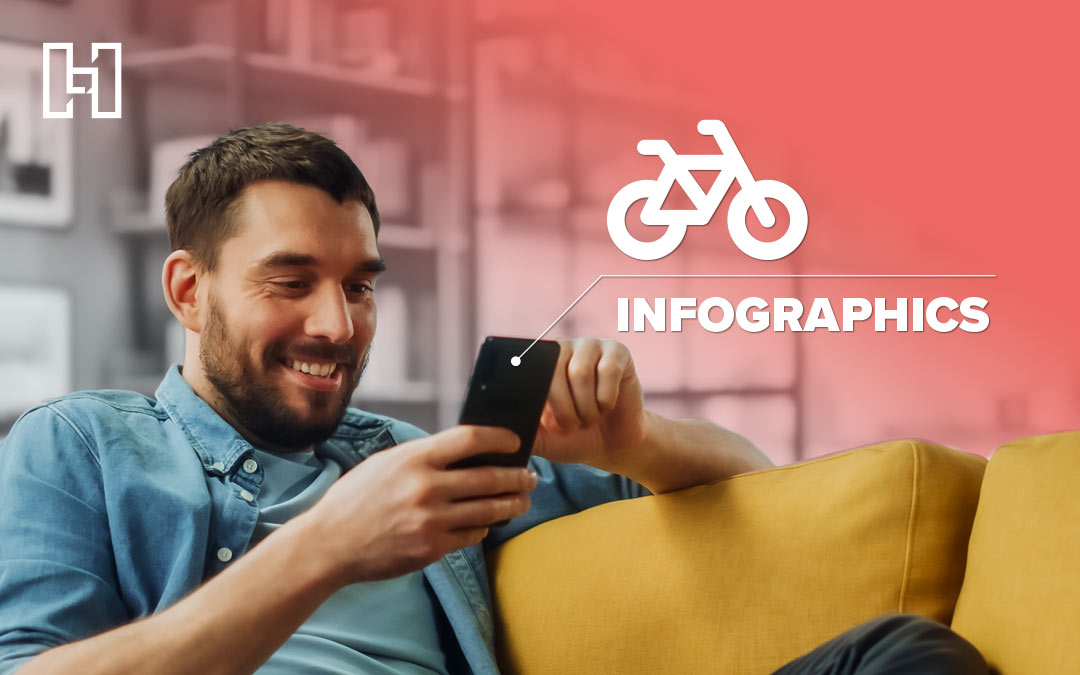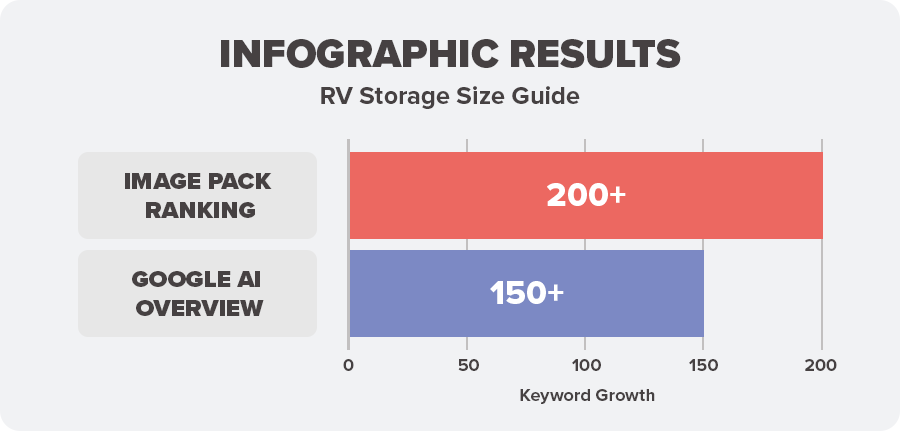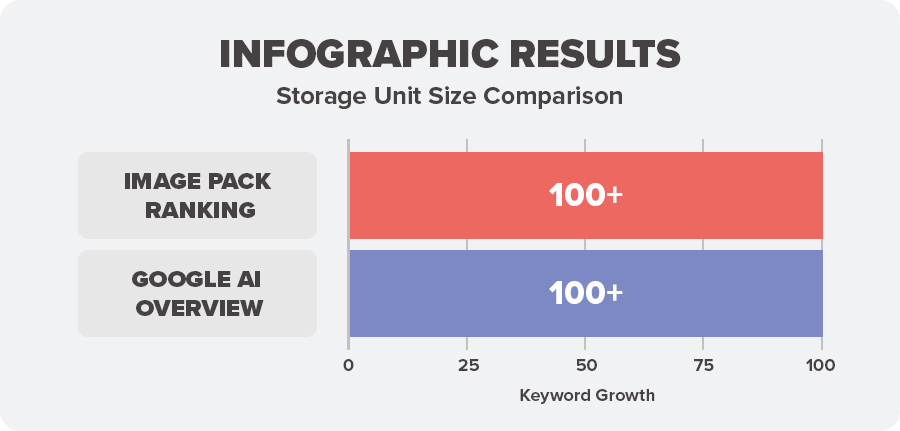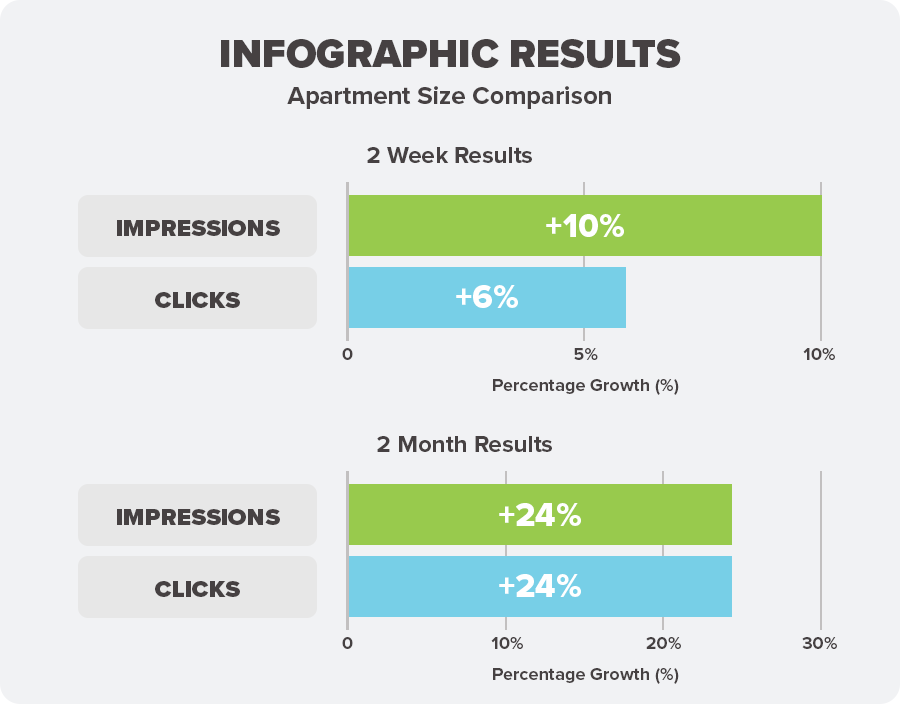Google’s serving answers before anyone even clicks, which makes text-only content easy to ignore. Infographics cut through the noise—earning attention, rankings, and recall in ways words alone can’t.
Benefits of Infographics
“In an era where Google rewards multimedia-rich, authoritative content, investing in strategic infographics is a proven way to elevate brand presence, engagement, and long-term organic performance.” – Molly Q., SEO Manager, Hurrdat Marketing
Infographics make content more scannable, engaging, and shareable—helping users find answers faster, stay on the page longer, and convert at higher rates. This rich content type also sends strong relevance and quality signals to search engines, improving rankings and visibility for competitive topics. Here are more reasons you need to be including infographics in clients’ marketing strategies.
Easily Explain Concepts
65% of buyers are visual learners. Infographics take your content and break it into bite-sized pieces of visual data—whether that’s through charts, pictographs, timelines, or other graphic formats—that’s significantly easier to learn and remember. Without visuals, your clients will struggle to tell complex stories and share complicated data in a way that’s easy for audiences to understand.
Improve SERP Visibility
“Infographics are an essential part of a forward-thinking SEO strategy, combining compelling visual storytelling with measurable ranking benefits.” – Molly Q., SEO Manager, Hurrdat Marketing
Traditional organic rankings alone are no longer the primary source of brand visibility. Optimizing for Google Image packs, image search, featured snippets, People Also Ask, and AI-generated modules is critical, especially as zero-click search results rise and images show up on search results more frequently. Expanding into these rich result formats increases your SERP real estate, pushing competitors further down the page and keeping users in front of your client’s brand longer.
Support Featured Snippets & AI Overviews
As AI-powered search engines improve—especially Google’s AI Overviews and third-party LLM-driven platforms—infographics are emerging as highly crawlable, high-trust content types. Their structured, visual format makes them ideal for summarizing complex information in ways Google machine learning (and humans) can digest. Content that’s semantically rich, visually annotated, and easily parseable is more likely to be surfaced.
Build Link Potential
Infographics that are unique and useful earn more backlinks, boosting your domain authority and website traffic. In fact, blog posts with infographics get 178% more inbound links and 72% more views than those without. They’re also the most liked and shared content on social media—so make them easy to share with embed codes and social buttons for the best results.
Grow Brand Recognition
People develop a preference for a brand just by seeing its name in the background of their daily lives. Since infographics are more memorable than plain text, they encourage potential customers to make positive associations with the brand long before they’re ready to make a purchasing decision.
When creating infographics for clients, use on-brand logos, colors, fonts, styles, website links, and social media handles for further brand recognition across the web.
Enhance Topical Authority
Infographics that rank well on Google Image searches can drive more traffic to the brand’s website, especially when you use image-optimizing techniques like alt-text and structured data. Infographics help Google understand that the content covers the topic comprehensively and clearly, especially with complex concepts like apartment sizes or square footage.
Repurpose Old Content
Why not get extra mileage out of your best, top-performing ideas by repurposing content into highly shareable infographics? This content marketing tactic can save you time since you won’t have to brainstorm new topics or start from scratch. Instead, you can pull topics from past blog posts, ebooks, webpages, and other platforms and make them into infographics.
Generate Leads for Email Marketing
Use marketing infographics to grow your clients’ email lists. Set up a website widget that allows users to download a PDF in exchange for their email addresses. After you have them in your content marketing funnel, convert them into dedicated customers.
Track Marketing Results
Reporting infographic ROI is generally easier than UGC, multi-touchpoint assets, and brand awareness content, but still not as straightforward as tracking something like a paid ad or a conversion landing page.
With infographics, you can:
- Track direct traffic and engagement on the page hosting it (sessions, time on page, scroll depth)
- Monitor backlinks it earns over time
- Measure social shares if you add UTM parameters or embed codes
The tricky part is attribution—knowing if someone converted because they saw the infographic versus just visiting that page. But compared to brand awareness content or podcasts, you usually get more tangible engagement and SEO signals to measure.
How We Strategically Use Infographics
Knowing what type of infographic to include, where it fits, and what content type it’s relevant for takes appropriate planning and research. Here are the steps we take to strategize and implement infographics for clients.
Step One: SERP Analysis
We target queries directly related to clients’ products, services, or industry expertise to identify the types of content that appear in AI Overviews, image results, and featured snippets.
Step Two: Competitor Analysis
We study how top-ranking results use rich content like diagrams, tables, and infographics. By identifying content gaps and UX improvements, we get a better idea of what kind of rich content would help our clients outperform competitors.
Step Three: SEO & Rich Content
We pair on-page optimizations (like keywords and better header structures) with custom infographics to increase topical authority and visual appeal. Each infographic gets descriptive alt text and is placed within short, relevant copy to make search engines more likely to pull the sections for featured snippets.
Results from Our Work
On average, our rich content strategies have helped clients improve key metrics by over 40% and gain rankings for more than 130 new keywords. Here are a few examples.
RV Storage Size Guide Infographics
- Increased visibility and traffic for the website within image and web search
- Secured image pack rankings for over 200 new keywords
- Earned citations in Google’s AI Overviews for over 150 new keywords
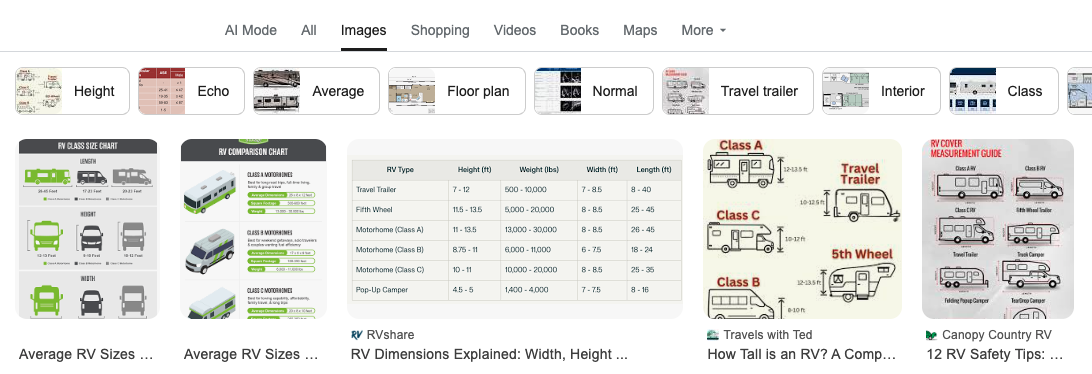
Storage Unit Size Infographics
For our client, we created unique storage unit size blog posts (Your Guide to 5×5, 5×10, etc. Storage Units) with unique infographics. This dual approach generated keyword rankings within AI Overviews and image packs for over 100 keywords.

Apartment Size Comparison Infographic
Within the first two weeks:
- Increased impressions by 10% and clicks by 6%
- Moved many keywords from positions 3-7 into position 1
- Gained visibility within featured snippet queries in SERPs
- Gained image visibility within the Google Image search tab
After two months:
- Impressions grew 24% and clicks grew 24%
- Rankings within featured snippets grew 110%
- Visibility within SERP features such as AI Overviews and People Also Ask grew 70%
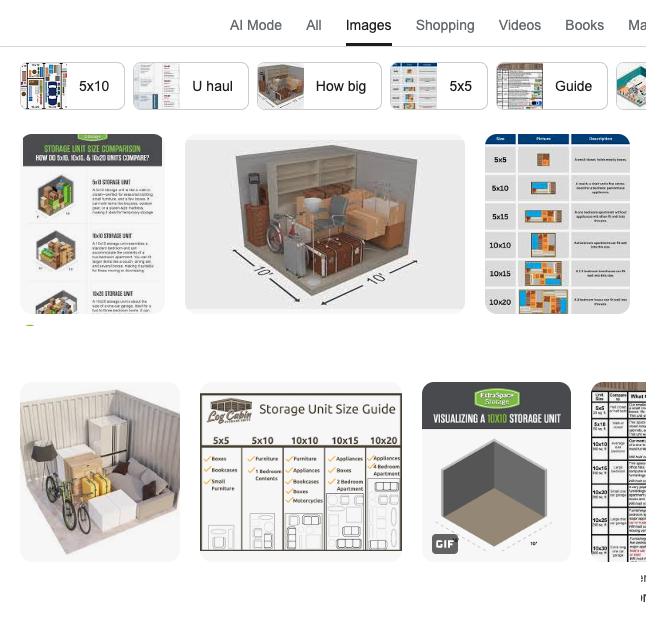
Key Takeaways of Using Infographics to Improve SEO
- Infographics Are SERP Gold: Visuals help content appear in featured snippets, AI Overviews, and image packs.
- Better UX = Higher Engagement: Easy-to-digest visuals reduce bounce rates and raise clicks by quickly meeting user intent.
- SERP Features Are the New SEO: Winning image packs, snippets, and AI modules are now more important than traditional rankings.
- Future-Proofed Strategy: Infographics are ideal for AI-driven search thanks to their structured, machine-friendly format.
- AI Favors Structured Visuals: Clear, annotated content with strong alt text ranks better in LLM-generated results.
- Visual UX Satisfies Search Intent: Informative visuals improve scannability, aiding both user satisfaction and SEO signals.
Need help with your content marketing or rich content strategy? Hurrdat offers content marketing and SEO services that help reach target audiences. Contact us today to learn more!
